
Do you have a question about the Brother MFC-8912DW and is the answer not in the manual?
| Functions | Print, Copy, Scan, Fax |
|---|---|
| Print Technology | Laser |
| Print Resolution | 1200 x 1200 dpi |
| Duplex Printing | Yes |
| Paper Capacity | 250 sheets |
| Connectivity | USB, Ethernet, Wi-Fi |
| Automatic Document Feeder (ADF) | Yes |
| ADF Capacity | 50 sheets |
| Paper Capacity (Multi-purpose Tray) | 50 sheets |
| Display Size | 2.7 inches |
| Memory | 256 MB |
| Processor | 600 MHz |
| Scan Resolution | 1200 x 1200 dpi |
| Fax Speed | 33.6 Kbps |
| Mobile Printing | Brother iPrint&Scan, Google Cloud Print |
| Dimensions (W x D x H) | 16.1 x 12.5 inches |
Lists the specific models covered by this service manual, including DCP and MFC series.
Details the technical specifications for various models, covering print method, resolution, speed, and power consumption.
Provides general specifications such as model, print method, resolution, print speed, warm-up time, CPU, memory, interface, and power consumption.
Details the wired and wireless network capabilities, including node type, network type, and security protocols supported.
Outlines the expected life of parts, MTBF, MTTR, maximum monthly volume, and periodical maintenance parts.
Lists the consumables like toner cartridges and drum units, including their estimated page yields and shelf life.
Covers paper handling specifications, including input/output capabilities, paper types, weights, and sizes supported.
Shows the maximum unprintable and unscannable areas for FAX, Copy, Scan, and Print functions.
Specifies telephone-related features, indicating the availability of a handset.
Details FAX specifications including modem speed, transmission speed, ITU-T group, color capabilities, and internet FAX.
Provides copy specifications such as copy speed (A4/Letter), first copy out time, and resolution.
Lists scanner specifications including optical and interpolated resolution, and scanning speed for monochrome and color.
Details the supported direct print methods and file formats via USB connection.
Provides an overview of troubleshooting procedures and essential precautions to prevent secondary problems.
Outlines critical safety precautions to take before troubleshooting, including unplugging power and handling static electricity.
Lists essential checks related to operating environment, power supply, paper, and consumables before starting repairs.
Provides cross-section drawings and explanations of the printer and ADF/document scanner units.
Illustrates the internal components of the printer part and the ADF/document scanner unit.
Explains the paper feeding paths for the printer part and the scanning process for ADF units.
Details the function and operation of various mechanical parts and sensors within the machine.
Presents a schematic block diagram showing the interconnections between various PCBs and components.
Illustrates the main internal components of the machine, showing their locations for disassembly.
Explains how toner and drum life are detected and provides data on printable pages and expected life.
Lists and describes error codes, their problems, and the page references for remedies.
Provides a comprehensive table of error codes, their associated problems, and relevant page numbers for troubleshooting.
Details error messages displayed on the LCD, their descriptions, corresponding error codes, and reference pages.
Lists communication error codes (Code 1, Code 2) and their causes, relevant to fax and network issues.
Provides detailed procedures for diagnosing and resolving common problems and errors.
Lists specific error codes with their causes and remedies, guiding users through troubleshooting steps.
Offers solutions for issues related to paper feeding, such as multiple sheets, wrinkles, feeding at an angle, or curling.
Addresses problems related to print quality, including examples of defects and troubleshooting steps.
Provides guidance for resolving software-related issues, particularly when printing is not possible.
Offers solutions for issues encountered when printing via a network connection.
Covers troubleshooting steps for issues related to the LCD display and control panel operability.
Addresses issues related to toner detection, cartridge errors, and drum unit problems.
Details troubleshooting steps for fuser unit failures, including harness connection and component issues.
Provides troubleshooting steps for laser unit failures, focusing on earth plate contact and cable connections.
Addresses troubleshooting for failures related to the main PCB, high-voltage, and low-voltage power supply PCBs.
Covers issues related to document feeding, such as multiple sheets, wrinkles, or incorrect size detection.
Helps diagnose and fix image defects like light prints, faulty registration, dark images, and streaks.
Provides solutions for fax-related issues such as inability to send/receive, no bell sound, or communication errors.
Addresses miscellaneous problems including machine not turning on, fan failure, motor issues, noise, and memory malfunctions.
Details safety precautions to follow during maintenance work to prevent injury and damage.
Illustrates the components and materials required for packing the machine.
Provides a visual catalog of screws used in the machine, categorized by type and size.
Lists the correct tightening torque for various screws used in different machine parts.
Specifies lubrication points, types of oil, and quantities required for specific parts.
Provides diagrams and lists of gears used in the machine, showing their locations and part numbers.
Illustrates the routing of various harnesses and cables for major assemblies like the Main PCB ASSY.
Presents a visual flow chart illustrating the recommended order for disassembling and reassembling machine parts.
Provides step-by-step instructions for disassembling various parts of the machine.
Details initial steps for disassembly, including disconnecting cables and removing accessories.
Step-by-step instructions for removing and disassembling Paper Tray 1.
Procedure for removing the back cover and outer chute, including notes on rib and boss removal.
Instructions for removing the fuser cover by releasing knobs and bosses.
Steps for removing the MP cover ASSY and MP paper guide ASSY, with notes on careful removal.
Procedure for removing the front cover ASSY, including releasing release buttons, hooks, and bosses.
Instructions for removing the side cover L and access cover by releasing screws and hooks.
Procedure for removing the side cover R ASSY by releasing screws and hooks.
Steps for removing the ADF unit, including disconnecting harnesses and removing the core holder.
Instructions for removing the Hinge ASSY L from the ADF unit.
Procedure for removing the Hinge R, hinge support R, and hinge arm R from the ADF unit.
Steps for removing the ADF cover ASSY and the second side document hold.
Procedure for removing ADF sensors and PCBs, with notes for duplex scanning models.
Instructions for removing the document ejection shaft, roller ASSY, and drive frame ASSY.
Steps for removing the panel cover, printed panel cover, and associated harnesses.
Procedure for removing the document scanner unit, including disconnecting harnesses and screws.
Instructions for removing the first side CIS unit, including CIS guides and drive belt.
Procedure for removing the joint cover, including disconnecting various harnesses and shields.
Steps for removing the Wireless LAN PCB ASSY and its harness.
Procedure for removing the USB host PCB ASSY and its harness.
Instructions for removing the speaker unit and its harness.
Steps for removing the NCU PCB ASSY, NCU unit, and associated harnesses.
Procedure for disconnecting all harnesses and removing the main PCB ASSY.
Instructions for removing the fuser unit, including covers, links, harnesses, and springs.
Steps for removing the laser unit, including disconnecting the flat cable and screws.
Procedure for removing the low-voltage power supply PCB ASSY, including insulation sheets and covers.
Instructions for removing the Toner LED PCB ASSY, including shield plates, springs, and harnesses.
Steps for removing the main fan, including releasing cams and hooks.
Procedure for removing the filter from the air duct and the air duct itself.
Instructions for removing the relay front PCB ASSY, including sensors and harnesses.
Steps for removing the registration clutch and T1 clutch, including collars and harnesses.
Procedure for removing the main frame L ASSY, including under bars, insulation sheets, and harnesses.
Instructions for removing the main motor ASSY and drive sub ASSY, including gears and covers.
Steps for removing the develop joint gear and develop joint, including springs and hooks.
Procedure for removing the LT drive gear 29 from the main frame L ASSY.
Instructions for removing the Toner sensor PCB ASSY, including springs, harnesses, and LED holders.
Steps for removing the MP solenoid, lever, spring, and drive gear.
Procedure for removing the develop clutch 51R and develop one way clutch 53, including gears and harnesses.
Instructions for removing the new toner actuator and its spring.
Steps for removing the internal temperature thermistor and its harness.
Procedure for removing the main PCB shield calking ASSY and the fuser drive gear 39.
Instructions for removing the duplex solenoid and its related gears, springs, and levers.
Steps for removing the back cover sensor and its harness.
Procedure for removing the LT connector (T1) and its harness from the bottom frame.
Instructions for removing the T1 roller holder ASSY, including lift arm, springs, and bosses.
Steps for removing the high-voltage power supply PCB ASSY, including base plates and insulation sheets.
Procedure for removing the eject sensor PCB ASSY and its harness.
Instructions for removing MP roller components, including covers, bushings, springs, and actuators.
Steps for removing T1 paper feed sensor components, including actuators, springs, and harnesses.
Procedure for removing MP paper empty sensor and actuator components.
Instructions for removing registration sensor and actuator components, including springs and harnesses.
Step-by-step instructions for disassembling parts of the LT unit.
Procedure for removing and disassembling Paper Tray 2, similar to Paper Tray 1.
Instructions for removing the T2 roller holder ASSY, involving lift arms, springs, and actuator components.
Steps for removing the T2 side cover L by releasing screws and hooks.
Procedure for removing the T2 side cover R by releasing screws and hooks.
Instructions for removing the T2 front cover ASSY by releasing screws and hooks.
Steps for removing the T2 relay PCB ASSY and disconnecting harnesses.
Procedure for removing the T2 clutch and its harness.
Instructions for removing the T2 paper feed sensor PCB ASSY, under bars, and frame units.
Steps for removing the T2 back cover by releasing screws.
Procedure for removing the LT connector ASSY (T2) from the LT unit.
Details the steps for installing firmware, setting country, initializing EEPROM, and adjusting touch panel after replacing the main PCB.
Provides procedures for checking firmware version and installing firmware using USB flash memory or PC.
Explains how to enter maintenance mode and set the country code for machine customization.
Describes how to initialize EEPROM parameters by entering specific function codes in maintenance mode.
Guides on setting the serial number and adjusted laser unit values using the BrUsbsn.exe utility.
Explains the process of acquiring white level data and storing it in the EEPROM via maintenance mode.
Provides instructions for calibrating the touch panel detection area using a stylus.
Details the procedure for entering the adjusted value of the laser unit after replacement.
Explains how to reset the irregular power supply detection counter after replacing the low-voltage power supply PCB.
Describes how to initialize pre-discharge detection parameters after replacing the high-voltage power supply PCB.
Covers resetting counters for periodic replacement parts like drum, fuser, and paper feeding kits.
Details steps for installing firmware, adjusting touch panel, and checking LCD/control panel operations.
Explains how to acquire white level data for the document scanner, ADF, or CIS unit after replacement.
Describes the maintenance mode for checking settings, adjustments, and sensor operations.
Provides methods for entering maintenance mode for both end-users and service personnel.
Lists all available maintenance mode functions with their codes and corresponding reference pages.
Explains specific maintenance mode functions, including EEPROM initialization and test patterns.
Initializes EEPROM settings for operation parameters, user switches, and worker switches.
Prints contrast level data for document scanning compensation and explains data to be printed.
Moves the CIS unit to the transportation position for packing and shipping after repair.
Tests the performance of the automatic document feeder (ADF) by counting scanned pages.
Prints a test pattern to check for missing images and overall print quality.
Allows setting and printing worker switch data to configure various machine functions.
Checks the operational status of the LCD on the control panel by cycling through display screens.
Verifies the functionality of control panel buttons by checking their corresponding LCD displays.
Displays firmware, program, and check sum information on the LCD.
Checks the operating conditions of various sensors by changing their states and observing LCD feedback.
Checks the connection status of the wired LAN, displaying active or inactive states.
Allows changing various print function settings, such as resolution, toner save, and media type.
Adjusts USB serial number, duplex print position, and Deep Sleep mode settings.
Customizes EEPROM settings for language, function settings, and worker switches based on country.
Transfers received fax data, log information, communication reports, and maintenance information.
Adjusts scanning start/end positions for ADF and document scanner units.
Obtains white level data and scan area, storing them in the EEPROM for compensation.
Calibrates the touch panel detection area by touching specified points on the screen.
Conducts paper feed and eject tests while printing patterns to check for printing flaws.
Prints a frame pattern on one side of paper to check for printing flaws.
Prints a frame pattern on both sides of paper to check for printing flaws.
Prints a solid pattern to check the developer roller or exposure drum for dirt or damage.
Customizes machine settings like language and worker switches based on the selected country code.
Prints maintenance information including consumable status, replacement counts, and counter values.
Checks the main fan operation and rotation speed (100%, 50%, OFF).
Displays machine log information, including serial number, MAC address, and page counts.
Displays the latest error code encountered by the machine on the LCD.
Sends error lists to remote service stations for fax communication problem analysis.
Resets counters for replaced parts like drum, fuser, and paper feeding kits.
Exits the maintenance mode and returns the machine to the ready state.
Provides functions for changing Deep Sleep and Sleep modes, and resetting periodic replacement parts.
Allows changing the Deep Sleep mode setting to ON or OFF when storage data is available.
Enables changing the machine's sleep mode setting to ON or OFF.
Resets counters for periodic replacement parts to clear errors or acknowledge replacements.
Manually resets the developer roller counter, similar to replacing a toner cartridge.
Displays the ROM version information for the machine.
Prints demo data stored in the ROM to check machine functions.
Provides the detailed wiring diagram showing connections between PCBs and components.
Details safety precautions to follow during maintenance work to prevent injury and damage.
Lists parts that require periodical replacement and the preparation steps for their replacement.
Outlines initial steps for periodical replacement, including disconnecting cables and removing accessories.
Instructions for replacing the fuser unit, involving removal of covers, links, and harnesses.
Steps for replacing the laser unit, including removing side covers and harnesses.
Procedure for replacing the MP paper feeding kit, involving roller covers, springs, and actuators.
Instructions for replacing Paper feeding kit 1, similar to Paper Tray 1 disassembly.
Steps for replacing Paper feeding kit 2, involving tray covers, springs, and actuators.

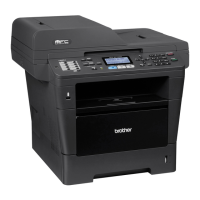

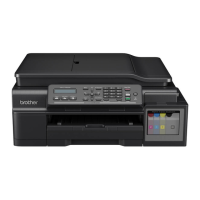
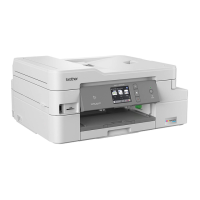
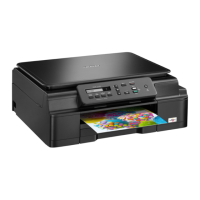

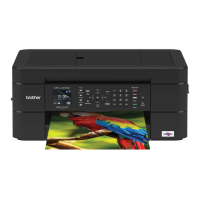
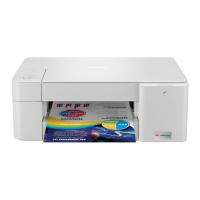
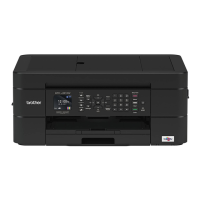
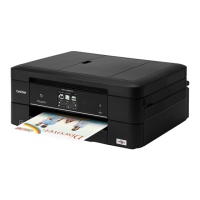
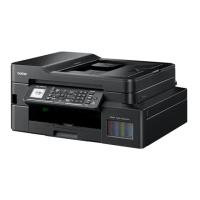
